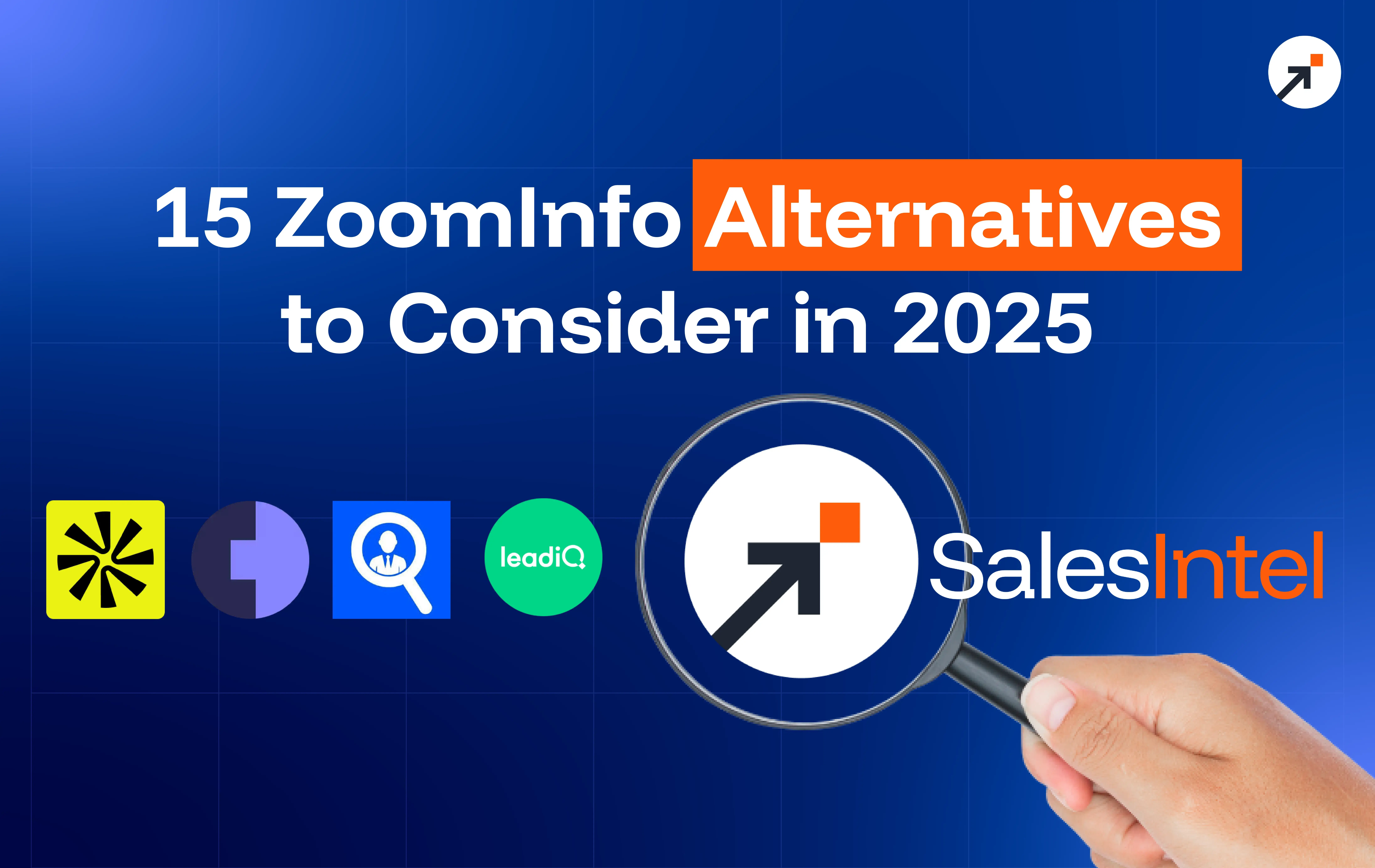Why are some companies more successful than others? The most obvious answer would be – because they have better products and services. But is that all? Often some companies with great products fail while others with mediocre products thrive.
Turns out, there is something equally if not more important than having a good product – the ability to sell. A company that can precisely recognize and target its customers is always in a better position than those who can’t. This is particularly applicable in the B2B space that runs on low-volume high-margin models and where every customer is of significant value.
The rise of ABM and sales intelligence are fine examples of the efficacy of taking a targeted approach.
Now the question is – why are some companies better in their targeted sales and marketing efforts than others? The answer is simple – data. Companies with a keen knowledge of their market, ICP, and whose CRM is filled with right contacts always have their pipeline full and in general register better than average revenue growth.
So how can you leverage the power of data for your own B2B business growth? Here are 3 simple steps:
1. The Groundwork
Before you can use data to build pipelines, define touchpoints, and create more engagement, some groundwork is essential to achieve efficiency and make the overall process more effective. This includes:
Have the Right Process & Tools
The first thing you need is to clearly define your sales process and have the right tools to execute it. Depending on the type of product/service, sales cycle, deal size, etc., your sales funnel can have different stages and you might need to build territories for effective oversight.
This would require in-depth data to accurately assess your target accounts and gauge into the activities of your leads across the funnel.
So get the requisite tools, have the right data and build your sales process around it.
Prepare Your Database
The next step is to build your database upon which all the subsequent sales and marketing efforts will rely. Only 33% of marketers feel they can rely on CRM data to make decisions. If the data in your database is incorrect, your emails will bounce, calls will go unanswered and your whole outreach strategy will fall apart.
So, if you already have a database, enrich it. If not, signup for a data provider who can help you build it from scratch.
2. Build your ICP
Once you have laid the foundation with the right processes, data, and tools, the next thing you need to do is to define your ICP in as much depth as possible to serve as the common target for all your outreach programs.
If you aren’t sure how to zero in on your ICP, you can read the details here but the basic process is to have an in-depth analysis of all your target accounts in the past and their data points to come up with key characteristics you need to use to identify new high quality targets.
Luckily, AI can help make this a quick and more effective exercise.
3. Use Intent Signals
After you have figured out your ICP and know who your potential customers are, the next step is to look out for buying intent. Companies who have raised funding recently or simply those who have put an RFI (Request For Information) are clearly looking for new solutions and are the most promising prospects who must be targeted immediately.
You can obtain such intent signals from data platforms like SalesIntel that can also help you build your new database or enrich your existing one.
4. Engage the Entire Buying Center
One of the key differences between a B2C and B2B buying is that while people often buy impulsively on their own, B2B purchases are driven by a buying center of around 5-7 decision-makers.
For you to be able to close a deal, you must convince all of them because every decision-maker can potentially block your proposal and be an influencer for your competitors.
So before you launch your outreach program, you must pay close attention to their organizational chart and figure out the buying center who would all be then reached out simultaneously.
Now, how exactly do you define the buying center at scale? There are two key factors: the hierarchy of many companies is such that you may target a corporate family at multiple levels, or across several business units. You need to have data on the buying center entity for your solutions.
You also need to be able to identify the personas most likely to be part of that buying committee. Job titles and functions are sometimes helpful. But ideally you can look beyond to factors like skills, expertise, technology, job level, and more.
With a more holistic persona profile you’re likely to be able to target the IT Director at Acme Corp. focused on security vs. the IT Director focused on application development.
On a closing note, while selling in the B2B space remains an intricate process with numerous moving pieces, data remains the nucleus around which everything else revolves. From discovery and prospecting to nurturing and engagement, the right data holds the key to creating more opportunities and closing deals faster.





